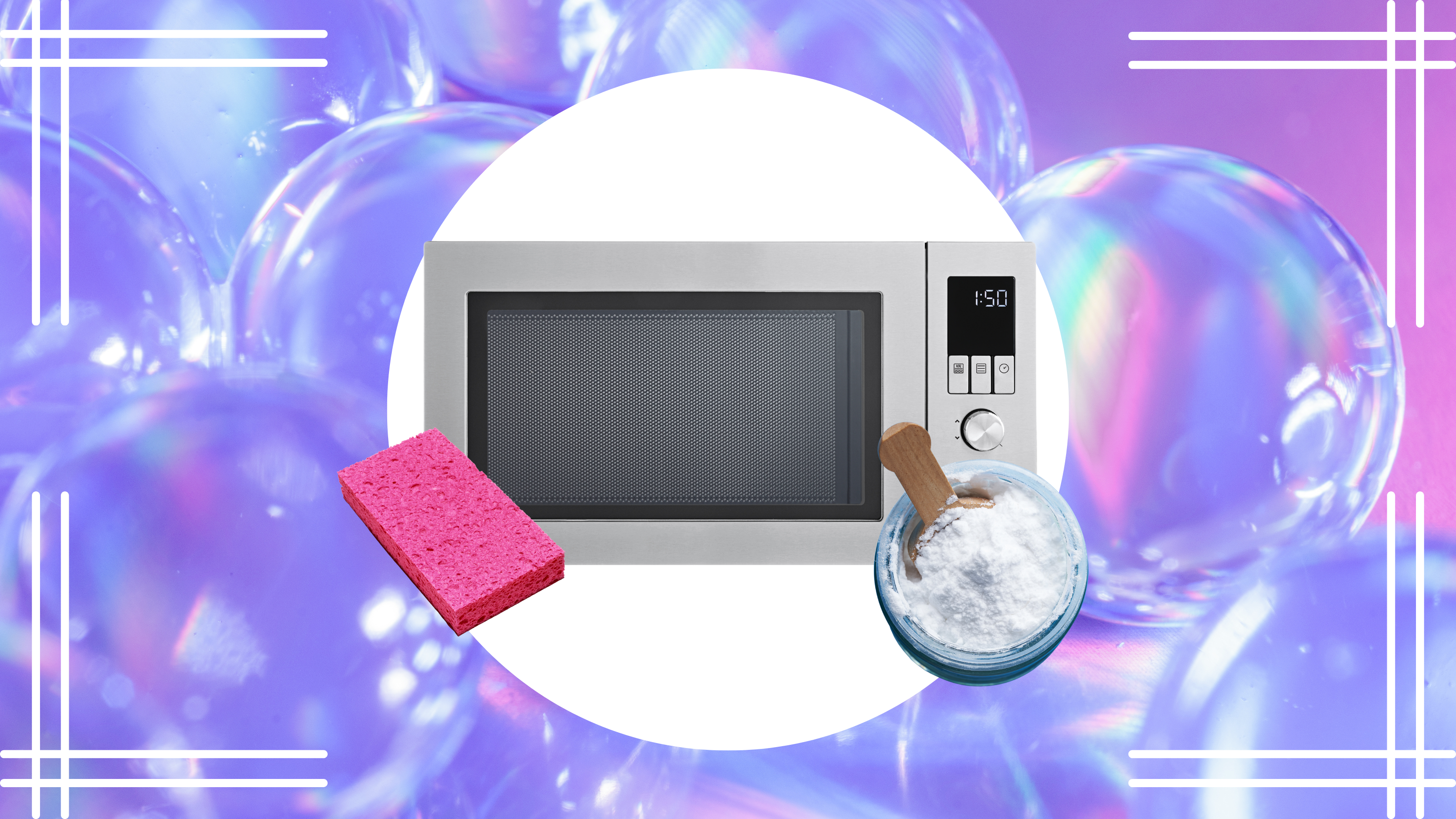How to clean a microwave with baking soda
Baking soda for the win


One of my favorite microwave cleaning hacks is using baking soda, simply because it’s non-toxic, doesn’t smell bad, and works a total treat. Plus, it’s super economical too. And, it actually works, of course.
Whether you’re dealing with a smelly microwave that seems to be holding the smell of the last thing you cooked in it or you’re dealing with some seriously stubborn food splatters, baking soda should be on your radar. Honestly, it works like a dream and it’s quick and easy to use too.
Wondering how you can use baking soda to give your microwave a good ol’ clean? I’ve put together a simple guide to the ins and outs of the process.
Good to know
Effort: Easy peasy (honestly, the actual cleaning part only takes a couple of minutes)
Time: 15-minutes
Here’s what you’ll need
- Water (you know, from the tap)
- Baking soda (we always like to recommend this one from Arm & Hammer at Amazon)
- Microwave-safe bowl (these Pyrex ones from Amazon are my top pick)
- Sponge (this bulk pack of Scotch-Brite sponges from Amazon is a great option)
- Paper towels (personally, these Bounty from Amazon are my go-to)
How to clean a microwave with baking soda
Step 1: Fill a bowl with water and baking soda
Grab a microwave-safe bowl (these Pyrex ones from Amazon are a great option) and fill it halfway with water and add ¼ cup of baking soda — we'd recommend this pack of Arm and Hammer baking soda that's available at Amazon. Mix the water and baking soda together until the baking soda has fully dissolved.
Step 2: Heat the mixture
Next, place the bowl and mixture into the microwave and heat on full power for five minutes — or until the water and baking soda solution is steaming hot.
Get small space home decor ideas, celeb inspiration, DIY tips and more, straight to your inbox!
Step 3: Allow the steam to sit
Once the microwave has turned off, allow the steaming water and baking soda mixture to sit in the microwave with the door shut, so that the steam is able to properly penetrate any areas of stubborn grease and grime.
Step 4: Remove the bowl and wipe the microwave
After a few minutes, carefully remove the bowl from the microwave and use a clean, damp sponge (these Scotch-Brite ones from Amazon are a great buy) to wipe around the inside of the microwave. The steam should have loosened any build-up
Step 5: Dip a damp sponge into baking soda
Next, dip a damp sponge into baking soda, coating the bottom of the sponge completely. This can then be used to scrub any remaining areas of stuck-on food or grime, with the baking soda acting as a gentle abrasive, removing tough stains without damaging the microwave.
Helpful hint: before using this hack, remove the glass plate from the microwave. You can always wash this separately by hand or in the dishwasher.
Step 6: Wipe and dry the microwave
To remove any leftover baking soda, use a clean sponge to wipe out the microwave and then dry it using paper towels (I usually recommend these ultra-absorbent Bounty paper towels).
FAQs
How much baking soda do you use to clean microwave?
You only need a small amount of baking soda to clean a microwave. How much you need depends on the hack you’re using, but as a rule of thumb, you only need between a tablespoon and a cup of baking soda at most.
What happens when you put baking soda and water in the microwave?
When you put baking soda and water in the microwave, the two tend to mix and as they’re heated create a powerful steam that works well for removing (or loosening) stubborn splatters and stains.
What is the quickest way to clean a microwave?
One of the easiest and quickest ways to clean a microwave is to use water and baking soda, lemon, or vinegar and heat it in the microwave to create steam. The steam helps to loosen grime and grease, allowing you to easily wipe out your microwave.

Hi! I’m Beth Mahoney and I’m a former staff writer at Real Homes. I’ve been a journalist for the national press for the past six years, specializing in commerce and trends-related lifestyle articles, from product reviews and listicles to guides and features. With an eye for pretty things (think: quirky wall prints, scalloped edge furniture, and decadent-looking tableware) but a limited budget, I love nothing more than a bargain buy.